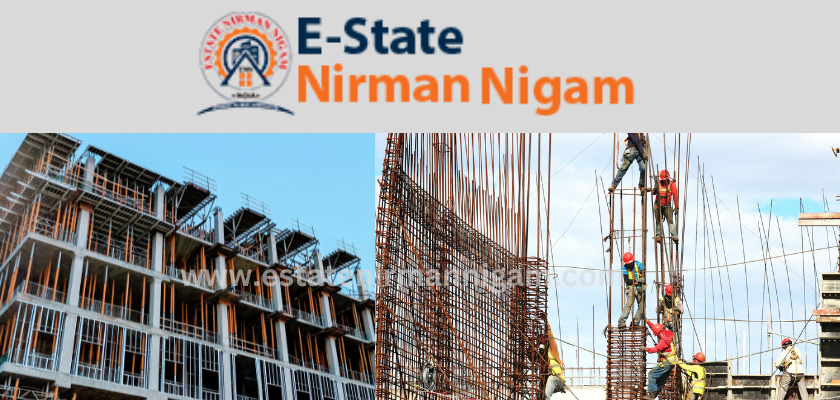://estatenirmannigam.in Development in india

It’s quite a hefty topic, but let’s break it down. Building materials encompass a vast array of substances used for construction, each with unique properties, applications, and impacts on the environment. Here’s an overview:E-state nirman nigam http://estatenirmannigam.in
Wood:
Traditional building material.
Renewable resource.E-state nirman nigam http://estatenirmannigam.in
Various types: softwood (e.g., pine, cedar) and hardwood (e.g., oak, maple).
Strengths: versatility, insulation properties, aesthetics.
Weaknesses: susceptibility to rot, fire hazard.

Sustainable forestry E-state nirman nigam http://estatenirmannigam.inpractices are crucial for long-term availability.
Concrete:
Essential in modern construction.
Mixture of cement, water, aggregates (e.g., sand, gravel), and sometimes additives.
Strengths: durability, E-state nirman nigam http://estatenirmannigam.inversatility, fire resistance.
Weaknesses: carbon footprint from cement production, non-renewable aggregates, cracks over time.
Ongoing research into greener alternatives like recycled aggregates and low-carbon cements.
Steel:
Integral to structural frameworks.
Alloy of iron and carbon.E-state nirman nigam http://estatenirmannigam.in
Strengths: high strength-to-weight ratio, recyclability, versatility.
Weaknesses: susceptibility to corrosion, energy-intensive production.
Advancements in coatings and alloy compositions mitigate corrosion issues.
Brick:
Ancient building material.E-state nirman nigam http://estatenirmannigam.in
Made from clay or shale.
Strengths: durability, fire resistance, aesthetic appeal.
Weaknesses: energy-intensive manufacturing, limited insulation properties.
Innovations include hollow bricks for improved insulation and lighter weight.
Glass:E-state nirman nigam http://estatenirmannigam.in
Used for windows, facades, and decorative elements.
Made from silica sand, soda ash, and limestone.

Strengths: E-state nirman nigam http://estatenirmannigam.intransparency, aesthetics, recyclability.
Weaknesses: high energy consumption in production, poor insulation.
Emerging technologies enhance energy efficiency through coatings and double-glazing.
Plastics:E-state nirman nigam http://estatenirmannigam.in
Increasingly utilized in construction for pipes, insulation, and cladding.
Derived from petroleum or natural gas.
Strengths: lightweight, corrosion resistance, versatility.E-state nirman nigam http://estatenirmannigam.in

Weaknesses: environmental concerns (e.g., pollution, non-biodegradability), fire hazard.
Advances in recycled and bio-based plastics aim to mitigate environmental impacts.E-state nirman nigam http://estatenirmannigam.in
Composite Materials:
Combination of two or more materials for enhanced properties.
Examples include fiberglass, E-state nirman nigam http://estatenirmannigam.incarbon fiber reinforced polymers (CFRP), and engineered wood products.
Strengths: tailored properties (e.g., strength, flexibility), lightweight.E-state nirman nigam http://estatenirmannigam.in

Weaknesses: cost, complexity of production, limited recycling options.
Research focuses on developing sustainable composite materials and recycling techniques.E-state nirman nigam http://estatenirmannigam.in
Natural Stone:
Quarried from deposits worldwide.
Types include granite, marble, limestone, and slate.
Strengths: durability, natural beauty, low maintenance.E-state nirman nigam http://estatenirmannigam.in
Weaknesses: heavy, costly transportation, limited availability of certain varieties.
Sustainable quarrying practices and alternatives like engineered stone address environmental concerns.
Insulation Materials:
Essential for thermal and acoustic comfort.E-state nirman nigam http://estatenirmannigam.in
Examples include fiberglass, cellulose, foam plastics, and mineral wool.
Strengths: energy efficiency, soundproofing, versatility.
Weaknesses: environmental impactsE-state nirman nigam http://estatenirmannigam.in (e.g., embodied energy, emissions during production), potential health hazards.

Focus on eco-friendly alternatives like recycled materials and natural fibers.
Adhesives and Sealants:
Bind and seal building components.
Types include epoxy, polyurethane, silicone, and acrylic.
Strengths: bonding strength, waterproofing, flexibility.E-state nirman nigam http://estatenirmannigam.in
Weaknesses: volatile organic compound (VOC) emissions, degradation over time.
Emphasis on low-VOC formulations and sustainable sourcing of raw materials.
In summary, E-state nirman nigam http://estatenirmannigam.inbuilding materials play a critical role in shaping the built environment, and their selection influences factors such as sustainability, durability, energy efficiency, and aesthetic appeal. Advancements in material science continually driveE-state nirman nigam http://estatenirmannigam.in innovation towards greener, more resilient, and cost-effective solutions to meet the evolving needs of construction practices.


